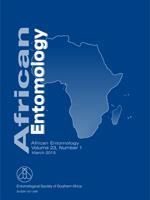Three chalcidoid wasp species, Megastigmus zebrinus Grissell (Torymidae), Quadrastichodella nova Girault (Eulophidae) and Leprosa milga Kim & La Salle (Eulophidae), have each been described independently as gall inducers associated with Eucalyptus species (Myrtaceae). The finding that at times they emerge together from seed capsules of river red gum (Eucalyptus camaldulensis Dehnhardt) collected at the same site in South Africa, cast doubt on the accuracy of these earlier interpretations. The current study examined the gall inducing abilities of each of the three wasp species. During geographical surveys, all three species coexisted in seed capsules at 16 of the 61 sites sampled. A study of the seasonal emergence pattern of the three species, together with a fourth, locally abundant gall associate, Aprostocetus sp., showed that Q. nova and L. milga emerge during early summer, while the remaining two species emerge in smaller numbers throughout the year. Oviposition trials on sleeved branches of E. camaldulensis, from which all insects had previously been excluded, verified that Q. nova had the ability to induce galls, while both M. zebrinus and L. milga failed to do so. Only one type of gall of characteristic structure was encountered, which repudiates the possibility of a second gall inducer, and no indication of inquilinism was found. Megastigmus zebrinus, L. milga and Aprostocetus sp. are thus more likely to be parasitoids.DNA sequences were obtained for the adults of all four these species. By matching the DNA of identified adults with that of juvenile hymenopterans in the galls, it was confirmed that all four hymenopterans species developed within the seed-capsule galls of E. camaldulensis. Regrettably, this technique failed to give a clear indication of the exact host relationships between the various gall inhabitants. By dissecting seed capsules at different stages of gall development, the origin of the gall was proven to be in the placenta of one of the locules of a flower bud, and not in a seed or ovule, as previously reported.
How to translate text using browser tools
1 March 2015
Evidence that Quadrastichodella nova (Hymenoptera: Eulophidae) is the only Gall Inducer among Four Hymenopteran Species Associated with Seed Capsules of Eucalyptus camaldulensis (Myrtaceae) in South Africa
H. Klein,
J.H. Hoffmann,
S. Neser,
G. Dittrich-Schröder
ACCESS THE FULL ARTICLE
It is not available for individual sale.
This article is only available to subscribers.
It is not available for individual sale.
It is not available for individual sale.

African Entomology
Vol. 23 • No. 1
March 2015
Vol. 23 • No. 1
March 2015
biological roles
DNA sequencing
geographical distribution
oviposition
seasonal emergence pattern





